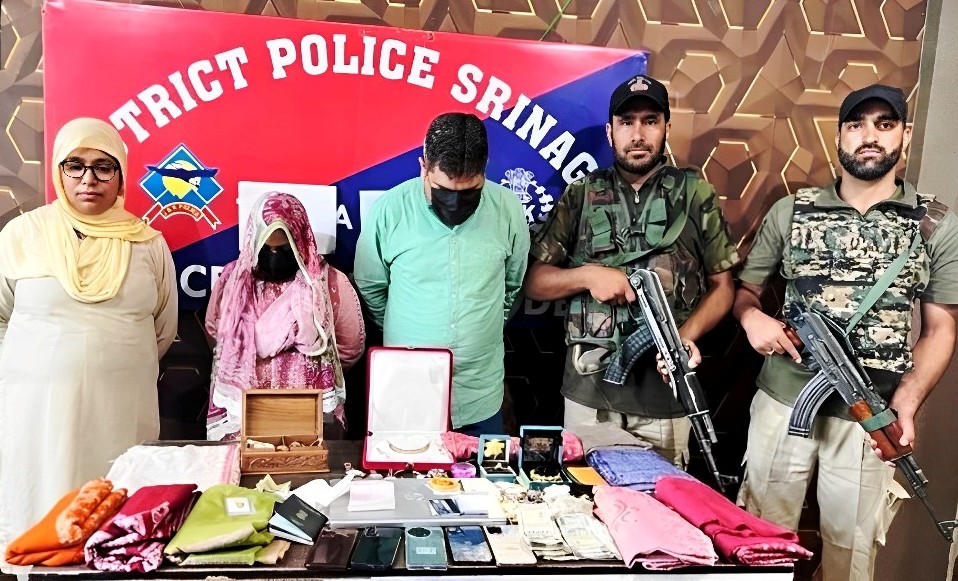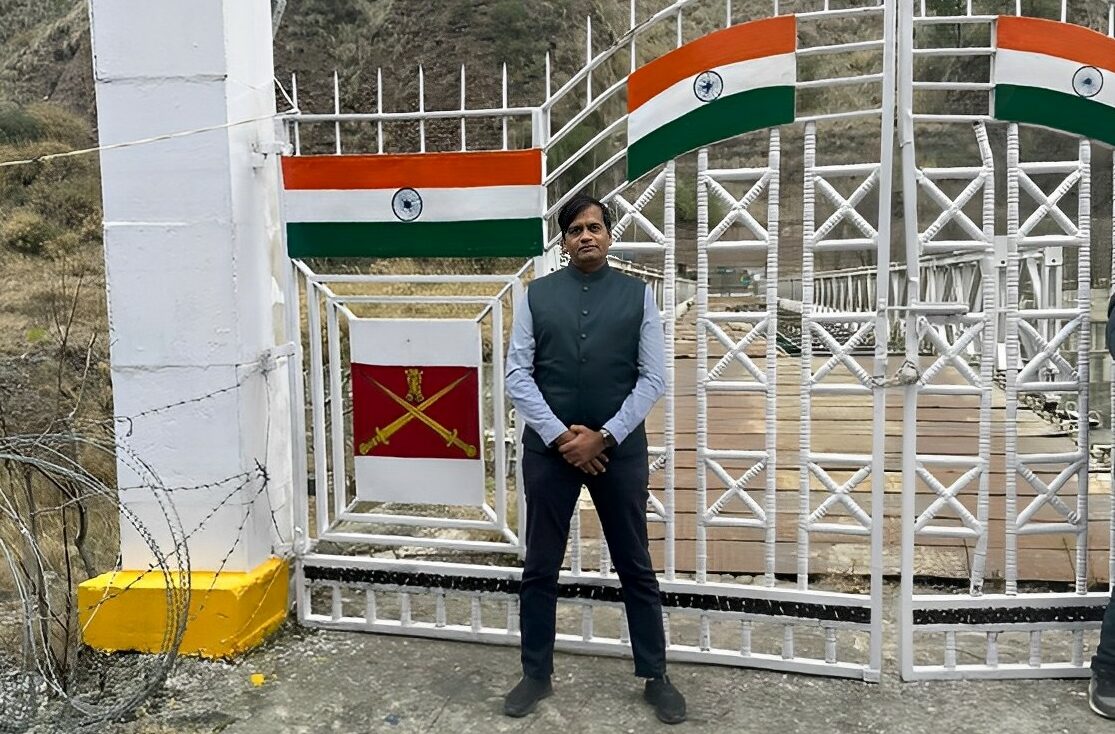Some of the crimes reported and investigated by the police in Kashmir seem to share the same story with some of the films that people have already watched, Syed Shadab Ali Gillani

Of all the mass media, the cinema has emerged as an influential cultural phenomenon with implications on all facets of life. Whether or not the cinema, especially in a subcontinental context, reflects the ecosystem it existed in, the larger reality is that movies and societies have an interdependent relationship.
Movies trigger instant fashion trends, even chain of events inspired by some interesting film. Salman Khan’s hairstyles in Radhe and Tere Naam became instant fashion statements. The extravagant weddings were inspired by Karan Johar’s romantic films. This emulation has also led to some concerning outcomes, particularly in terms of increased crime.
Mr Natwar Lal
One such case is a1979 movie Mr Natwarlal starring Amitabh Bachchan, where the main character takes on the identity of a powerful underworld figure named Natwarlal. This character was based on a real conman, Natwarlal, who was known for his elaborate schemes and forgery skills, including faking the signatures of prominent figures like Dr Rajendra Prasad and Dhirubhai Ambani. Natwarlal even claimed to have sold iconic landmarks like the Taj Mahal multiple times.
This portrayal in the movie was compared to a similar real-life con man named Janak Singh from South Kashmir’s Anantnag. Janak Singh, like Natwarlal, had a bold personality and engaged in fraudulent activities, including forging the signature of Indira Gandhi. He was eventually imprisoned for his involvement in the Punjab National Bank robbery.
Kiran Patel Conundrum
Kiran Patel, a conman from Gujarat, duped numerous officials in Jammu and Kashmir by pretending to be a close aide to the Prime Minister. He was given VIP treatment like Z-plus security, an armoured SUV, and a luxury hotel stay. An investigation uncovered his elaborate ruse.

Portraying himself as a thinker, strategist, analyst, and campaign manager, Patel created an intricate façade that included asserting he had a government mandate to improve hotel amenities. To gain the officials’ trust, he adeptly spun stories that implicated prominent politicians and influential bureaucrats.
Kiran Patel’s impersonation also evoked comparisons to the 2018 Bollywood film Special 26, about con artists posing as CBI officers to conduct fake raids. His charade ended on March 3, when he was apprehended during his third Kashmir visit. Now shifted to Ahmedabad, Patel’s daring identity fraud recalled cinematic con artists like AkshayKumar’s character in Special 26 and Leonardo DiCaprio as Frank Abagnale Jr in Catch Me If You Can. Both actors portrayed real-life cons who similarly assumed false identities to defraud victims.
Looteri Dulhan
Whether or not the real crimes were inspired by various films, the fact remains that a lot of crimes were similar to the tinsel town’s reel stories.
Back in 2015, a movie titled Dolly Ki Doli depicted the story of a clever con woman and her accomplices who tricked men into marrying her, only to abscond with their wealth shortly after. While the movie was a work of fiction, a strikingly similar incident unfolded in 2023 in the region of Jammu and Kashmir.
Shaheena Akhtar, originally from Rajouri, found herself amid a startling scandal. Accused of orchestrating over a dozen marriages and then vanishing with the newlyweds’ money and valuables, she drew comparisons to the fictional character. Her modus operandi was eerily similar – introducing herself under different names like Shaheena and Zaheena and often targeting older or disabled men.
The saga gained attention when a group of bewildered men converged at a local police station in Budgam, revealing the bizarre and unfortunate circumstances they had fallen victim to, all at the hands of a single woman. Shaheena’s real-life story outdid fiction, as it was uncovered that she had managed to marry a staggering 27 men. The astonishing tale quickly spread across social media platforms, leaving people utterly astonished, bewildered, angry, and astounded.
Strangely, in the movie Dolly KiDoli, the titular character managed to evade capture. However, the real-life Dolly, Shaheena, faced legal consequences. She was charged under sections 420 and 120B of the Indian Penal Code (IPC) in Budgam though she denied the allegations. While the movie portrayed a jilted lover turned serial con bride, Shaheena’s true motivations remained unclear in this intriguing real-life drama.
Interestingly, Kashmir has had many such “brides” in the past but it was Shakeena who worked so fast to reach such a high number.
Gruesome Violence
The 2011 Indian film Not a Love Story was inspired by the real-life 2008 Neeraj Grover murder case, where the victim’s body was cut into 300 pieces. Similar gruesome dismemberment and violence were depicted in the American TV series Dexter. The show featured a serial killer protagonist who was a police forensics expert. He would precisely slice his victims into parts before disposing of them in the ocean while keeping their blood as mementoes. Both works vividly explored real-life-inspired themes of horrific murders.
On March 7, 2022, a 30-year-old woman went missing in Soibug, Budgamto attend her computer classes. The investigation led police to 45-year-old tile mason Shabir Ahmad Wani, who had worked at the victim’s house. The woman’s disappearance and the suspect’s connection evoked chilling similarities to real-life and fictional depictions of horrific murders like the Neeraj Grover case and the TV series Dexter.
Wani confessed to abducting, beheading, and dismembering the missing woman, scattering her remains across Budgam to conceal his crime. Disturbing new details emerged –Shabir had buried her skull in his yard and hid limbs in a nearby water tank. Although police recovered the body parts for burial, relatives were shielded from witnessing the mutilation.
Deception
In 2005, the release of Bunty Aur Babli marked a significant box office success, earning praise from both audiences and critics for its unique storyline. The film revolved around a couple who employed a series of false identities to deceive and extract money from unsuspecting victims. Gradually becoming accustomed to their life of deceit, the duo continued their relentless scamming spree, cleverly manipulating and ensnaring innocent people.
In 2023, a remarkably similar real-life event took place in Jammu and Kashmir. News came out about a couple executing a parallel scheme, pretending to be high-ranking officials – IAS and IPS officers – within central Srinagar. Mirroring the deeds of their on-screen counterparts, this Kashmiri adaptation of Bunty and Babli successfully conned substantial amounts of money from their targets, luring them with the prospect of well-paying jobs and transfers in return for different favours.
The male suspect, Manmohan Gangoo, pretended to be a suspended High Court judge using a fake IPS officer’s identity, while his wife, Ayush Koul, assumed the role of an IAS officer. Authorities seized electronic devices, forged transfer and appointment papers, including Gangoo’s fabricated entry into the IPS. Interestingly, the couple had created documents including their own induction in IAS and IPS.
Additionally, unlawfully obtained cash, jewellery, and incriminating items were discovered at their residence.
In an interesting turn of events, social media users quickly drew comparisons between this real-life couple and the iconic fictional characters, dubbing them Kashmiri Bunty aur Babli. The striking similarity between the on-screen and real-life deceptions caused amazement and reinforced the idea that reality can sometimes be more astonishing than fiction.
Udta Kashmir
In 2016, Abhishek Chaubey’s crime drama film, Udta Punjab, brought attention to the disturbing issue of drug abuse among the youth in Punjab. The movie vividly portrayed the widespread use of various drugs, revealing a grim reality in the state. However, little did anyone anticipate that the troubling epidemic that afflicted Punjab would later infiltrate the younger generation in Kashmir, becoming a significant menace amid the region’s ongoing conflicts.
The misuse of opioids, heroin, cocaine, and other substances in Kashmir has now exceeded the levels even depicted in Punjab, making it the state with the highest rate of drug abuse in the country. Alarmingly, a survey on consumption revealed that an astounding 90 per cent of users were aged between 17 and 33, with a troubling number of young people falling into addiction each day.
As numerous young individuals were lured by the allure of drugs, Kashmir began to reflect the grim phenomenon of substance abuse depicted in fiction. The region, once renowned for its natural beauty and cultural heritage, began to witness the tragic loss of lives, reminiscent of the dire situation that once afflicted Punjab. It was not long before Kashmir earned the sombre label of Udta Kashmir, capturing the distressing reality of lives unravelling due to drug abuse.

From Chhapaak to Kashmir
In 2020, the Indian biographical drama Chhapaak brought Malti’s tale to the forefront, inspired by real acid attack survivor Laxmi Agarwal. The film shook the nation with its portrayal of Malti’s painful journey, as a victim of acid violence fueled by vengeful jealousy. The movie adeptly revealed systemic problems and societal complexities, shedding light on public awareness and the influence of patriarchal norms in such tragedies.
Sadly, a similar grim reality unfolded in Kashmir, echoing the themes of Chhapaak Anisa Nissar, 24, who experienced an acid attack while returning home. The assailant, Sajid Altaf, with a friend on a motorcycle, heartlessly threw acid on Anisa before fleeing. Sajid’s motives were rooted in anger and a thirst for revenge due to Anisa’s refusal to marry him.
Their broken engagement, tainted by Sajid’s unrelenting dowry demands, was further marred by stalking and harassment accusations. Sajid even threatened Anisa, warning of disfigurement if she did not yield to his demands. Tragically, Anisa suffered grave burns in the attack, losing her eyesight and bearing permanent scars.
The striking parallels between these real-life events and the narrative of Chhapaak stand as a stark reminder of the ongoing challenges faced by survivors of acid violence.
Heist Heights
A recent bank robbery in Mendhar shocked the Kashmir Valley, as an unknown individual executed a well-planned heist that brought to mind scenes from the 2017 Bollywood dark comedy Bank Chor. In the movie, Ritesh Deshmukh portrays a clever thief, and the story follows the unfolding of the robbery.
However, in this real-life event, the suspect was ultimately captured and held accountable, a departure from the film where the thieves managed to escape police custody.
Bank heists are a recurring theme in both on-screen and televised stories. Back in 2016, the Spanish series Money Heist garnered global attention for its intricate depiction of heists.
Domestic Violence
Movies like Mehndi (1998), Provoked (2006), Thappad (2020), Natkhat (2020) and Darlings (2022), have fearlessly explored the complexities of marital relationships, exposing the disturbing effects of entrenched patriarchal norms in society. These films have boldly revealed the hidden horrors often lurking behind closed doors. From a single slap shattering Amrita’s world in Thappad to Kiranjit’s enduring abuse in Provoked, these stories illuminate the painful realities endured by women.
Sadly, domestic violence is not confined to cinematic narratives. In Kashmir, it is an ongoing and tragic reality that has persisted for generations, casting a dark cloud over countless lives.
In a heart-wrenching incident in Baramulla , a woman allegedly suffered abuse from her in-laws on Eid, leading to her eventual death in a hospital. This grim occurrence reflects the continuous harassment she faced from her husband and in-laws since her marriage, often driven by dowry demands. Similar stories have emerged across different parts of Kashmir since the pandemic began, resulting in a distressing surge in domestic violence cases.
Examination of this concerning increase has shown that 63.1 percent of victims were 30 years old, 33.7 percent were between 31 and 40 years old, and 3.2 per cent were over 40 years old. These figures offer a stark depiction of the age groups most susceptible to such abuse.















